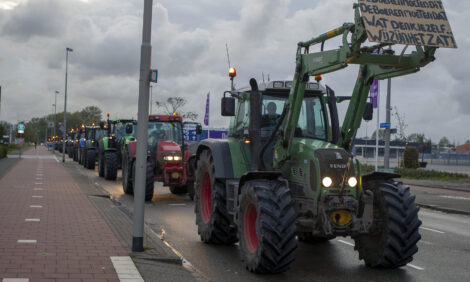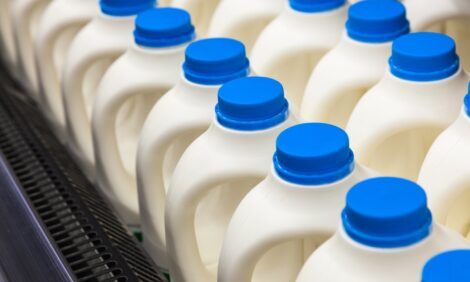



Farmers advised to secure new batch of Schmallenberg vaccine early to protect stock into next year
Schmallenberg disease is now endemic in the UK, with reported cases thought to be the tip of the iceberg, say leading vets.Last year clinical Schmallenberg reappeared in the UK, with disease confirmed on 141 holdings with lambs across England, Wales and Scotland between December 2016 and May 2017, and 76 holdings with calves up until June this year.
However, the number of actual cases are suspected to be a lot higher, said Carolyn Hogan, national vet manager at Zoetis.
“We suspect there has been significant under reporting of Schmallenberg, and this year we have seen it in areas where we have not seen it before, such as the Scottish Borders.
Ms Hogan said the increase in cases could be because the virus had been circulating at a low level for some time and as immunity of the herd or flock goes down, animals became infected again. Or it could have been due to a new incursion from Europe. We don’t precisely know.” she added.
Vet Keith Cutler from Endell Vet Group, Wiltshire, said he had seen more Schmallenberg this year than he’s ever seen, particularly in spring calving cows that would have been infected last autumn.
“We saw a number of deformities this spring in both beef and dairy herds. We have also confirmed a number of herds with seroconversion during the summer. We don’t know when they seroconverted, but it shows they have been challenged by the virus.
Mr Cutler added: “Vaccination is just like having insurance. You insure your house, but you don’t expect it to burn down tomorrow. In the same way, you should insure your animals by vaccinating.”
Vaccine control
Vaccination using Zulvac® SBV from Zoetis, is the only sure method of protection against Schmallenberg virus.
It will be available from Zoetis this month and will be the only vaccine available this year.
Supplies of the vaccine will be limited so farmers are being advised to secure stock early, as it can be used into next year too.
There are assumptions that a herd or flock is immune once it has been infected, but not every animal will have been infected and therefore not every animal will have immunity. Without testing farmers will not be able to distinguish animals which are immune from those which are not.
Ms Hogan said that while many farmers will have seen losses from Schmallenberg this year, other flocks and herds will have escaped infection.
“Even those which didn’t escape infection may be only partially immune if only a proportion of the animals were infected. This means vaccination has an important role to play in ensuring the whole flock/herd is protected, thereby preventing future lamb and calf crop losses,” she said.
The Key Risk Months
Schmallenberg virus is most risky for sheep that become infected in their second month of pregnancy and cattle in their third to fifth month of pregnancy (70-150 days), warned Ms Hogan.
“So typically, sheep which are bred in late summer / early autumn are the highest risk group as they will be pregnant during the months when the Culicoides midge is active. Infection during the second month of pregnancy is likely to result in stillbirths and deformities,” she said.
Likewise, cows which become infected in their third to fifth month of pregnancy (70-150 days) are most at risk, meaning those calving in late autumn/winter and early spring will have cows in their 3rd to 5th months of pregnancy during the May to October active midge period.
While midges can remain active outside this period the risk of infection reduces dramatically.
Ms Hogan added: “Schmallenberg virus is not going away, you need to think about it like you would IBR, leptospirosis or respiratory disease and have proactive discussions with your vet around the necessity for vaccination.”
When to vaccinate
For sheep, Zulvac® SBV is a single dose vaccine making it easier to administer as stock only have to be gathered once for vaccination. It should be administered at least 14 days prior to breeding and will give protection for six months.
In cattle, the vaccine programme is a two-dose programme, with the doses given three weeks apart. Protection in cattle lasts for 12 months.
In both sheep and cattle, the vaccine can be used in animals aged 3.5 months or over.
| TheCattleSite News Desk | Read more Zoetis News here |



